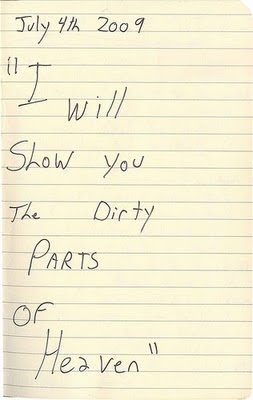Twenty seconds till the last call
I was 56, happily married to the woman I’d met at my 50th birthday party, father to three wonderful grown children and—in our now-blended family—delighting in my wife Janet’s equally wonderful grown daughter. Raised in Midwestern farm country, I was living a comfortable existence in Washington, D.C., long since adapted to the constant tumult and jerky rhythms of big city life.
Yet here I was, standing in my bedroom that evening more than a dozen years ago and announcing to Janet, “I’ve got to go to the wilderness. Alone. It’s been something I’ve been carrying in the back of my mind most of my life, and if I don’t do it now, while I’m still able, I’ll never do it.” Now, if this sounds like something very akin to a midlife crisis, then—looking back on it—I’d have to say, as cliché as that sounds, there’s some truth to it.
But there was more to it than run-of-the-mill midlife angst. I felt that my busy life had nearly swallowed this transplanted Iowa boy whole. It was as if, in the words of the old Tennessee Ernie Ford ballad, I owed my soul “to the company store.” Like so many of the people I knew, I’d slipped into some sort of Faustian bargain, in which the seductions and satisfactions of my regular routine had removed me from feeling I had any connection to the natural order of things. Sure, my life was full, but maybe too full—like a warehouse continually being restocked until it was bursting at the seams.
Let’s just go walking in the rain
For jazz fans, nothing could be more tantalizing than the excerpts made available by the National Jazz Museum in Harlem of newly discovered recordings from the 1930s and ’40s. Nearly 1,000 discs containing performances by masters like Coleman Hawkins, Lester Young, Billie Holiday and the long-neglected Herschel Evans suddenly re-emerged when the son of the audio engineer, William Savory, sold them to the museum.
The museum is doing its best to clean up and digitize the recordings. But because of the way copyright laws work, excerpts may be all that fans can hear for some time. The museum paid for the discs, but cannot distribute the music until it has found a way to compensate the estates of the musicians, many of which may be very difficult to track down after all these decades. Hawkins’s saxophone solo on “Body and Soul” may be reason enough for Congress to revisit this issue and free historical documents from excessive legal fetters.
Copyright laws are designed to ensure that authors and performers receive compensation for their labors without fear of theft and to encourage them to continue their work. The laws are not intended to provide income for generations of an author’s heirs, particularly at the cost of keeping works of art out of the public’s reach.
The Savory collection, like other sound recordings made before 1972, is covered by a patchwork of state copyright and piracy laws that in some cases allow copyrights to remain until the year 2067.
Year before I was born that was: sixtynine.

Desmond Morris, a curator of mammals at the London Zoo, suggested that permanently enlarged breasts in human females resulted from hominid bipedalism. (…)
The link between bipedalism and permanent breast enlargement, according to Morris, has to do with the erotic nature of breasts. He argues that as early humans (hominids) began walking upright, face-to-face encounters between the sexes became the norm, affecting the position used in sexual intercourse: males would no longer mount females from behind as they do among non-human primates. In the non-human primate position, presentation of the female buttocks to the male is an erotic display that stimulates male interest and excitement. with the advent of bipedalism, Morris argues, if females were to be successful in shifting male interest around to the front, evolution would have to do something to make the female frontal region more stimulating to males. This was accomplished, Morris says, through self-mimicry in which female breasts came to look like rounded buttocks: female breasts became mimics of “the ancient genital display of the hemispherical buttocks.”
Szalay and Costello (1991) have continued this line of thinking, but argue that permanently enlarged breasts sexually arouse males not because they look like buttocks, but because they mimic the appearance of female genitalia.
{ Frances E. Mascia-Lees, Sarah Lawrence College, Why Women Have Breasts, 2002 | Continue reading }
photo { Reka Ebergenyi photographed by Eric Fischer }
Yes, bread of angels it’s called. There’s a big idea behind it, kind of kingdom of God is within you feel.

“The problem is all inside your head”, she said to me. The answer is easy if you take it logically. (…) She said it grieves me so to see you in such pain, I wish there was something I could do to make you smile again. I said I appreciate that. (…) She said why don’t we both just sleep on it tonight, and I believe in the morning you’ll begin to see the light. And then she kissed me and I realized she probably was right.
{ Paul Simon, Fifty Ways to Leave Your Lover, 1975 | Lyrics }
50 Ways to Leave Your Lover is a 1975 hit song by Paul Simon, from his album Still Crazy After All These Years. It became number one on the U.S. Billboard Hot 100 on February 7, 1976, and remained there for three weeks.
Written after Simon’s divorce from first wife Peggy Harper, the song is a mistress’s humorous advice to a husband on ways to end a relationship. Studio drummer Steve Gadd created the unique drum beat that became the hook and color for the song consisting of an almost military beat. The song was recorded in a small New York City studio on Broadway.
{ Paul Simon, live on BBC TV, December 27, 1975 }
‘Life is painful and disappointing. It is useless, therefore, to write new realistic novels. We generally know where we stand in relation to reality and don’t care to know any more.’ –Michel Houellebecq

Central banks usually strengthen the economy through a single, vastly powerful tool — lowering interest rates. When the Federal Reserve makes it cheaper for banks to borrow money, that stimulus generally flows through the entire economy, as the banks make loans that in turn stimulate economic activity.
But when times are so dire that banks are reluctant to lend whatever the cost, interest rate cuts lose their punch. That happened in Japan after the bursting of its real-estate bubble in 1991, and happened again in the wake of the credit crisis that upended Wall Street in the fall of 2008. In those circumstances, central banks turn to what economists call “quantitative easing” — unorthodox methods of pumping money into an economy and working to lower interest rates that central bankers do not usually control. Their effect is the same as printing money in vast quantities, but without ever turning on the printing presses.
The shreds fluttered away, sank in the dank air: a white flutter then all sank.
Richard Freiherr von Krafft-Ebing (1840–1902) was an Austro-German sexologist and psychiatrist.
He wrote Psychopathia Sexualis (1886) [book cover], a notable series of case studies of the varieties of human sexual behaviour. The book remains well known for his coinage of the terms sadism (from Marquis de Sade whose fictional writings often include brutal sexual practices) and masochism (from writer Leopold von Sacher-Masoch, whose partly autobiographical novel Venus in Furs tells of the protagonist’s desire to be whipped and enslaved by a beautiful woman). (…)
In the first edition of Psychopathia Sexualis, Krafft-Ebing divided “cerebral neuroses” into four categories:
• paradoxia: Sexual desire at the wrong time of life, i.e. childhood or old age
• anesthesia: Insufficient sexual desire
• hyperesthesia: Excessive sexual desire
• paraesthesia: Sexual desire for the wrong goal or object, including homosexuality (”contrary sexual desire”), sexual fetishism, sadism, masochism, paedophilia , etc.
Krafft-Ebing believed that the purpose of sexual desire was procreation, and that any form of desire that did not go towards that ultimate goal was a perversion. Rape, for instance, was an aberrant act, but not a perversion, because pregnancy could result.
He saw women as sexually passive, and recorded no female sadists or fetishists in his case studies. Behaviour that would be classified as masochism in men was categorized in women as “sexual bondage,” which, because it did not interfere with procreation, was not a perversion.
‘You really don’t understand something until you can explain it to your Grandmum.’ –Albert Einstein

In a series of posts, I’ll review the current state of the field of the Evolution of Colour Categories. It has been argued that universals in colour naming across cultures can be traced back to constraints from many domains including genetic, perceptual and environmental. I’ll review these arguments and show that if our perception is affected by our language, then many conflicts can be resolved.
photo { Laurent Nivalle }
Shout a few flying syllables as they pass

When police in Western New York pulled over Gary Korkuc for blowing off a stop sign on Sunday, they found a live cat in his trunk, covered in cooking oil, peppers, and salt. Korkuc told authorities that his pet feline was “possessive, greedy, and wasteful” and that he intended to cook and eat it. Korkuc has been charged with animal cruelty. Is there a legal way to cook and eat a cat?
What is this the right name is? By Mosenthal it is. Rachel, is it? No. The scene he was always talking about where the old blind Abraham recognises the voice and puts his fingers on his face.

“I don’t believe society understands what happens when everything is available, knowable and recorded by everyone all the time,” he says. He predicts, apparently seriously, that every young person one day will be entitled automatically to change his or her name on reaching adulthood in order to disown youthful hijinks stored on their friends’ social media sites.
{ Interview with Eric Schmidt, Google’s CEO | Wall Street Journal | Continue reading }
‘The mummies that exist in your heart never crumble into dust and, when you bend your head over the railing, you see them below, looking at you with their opened eyes, immobile.’ –Flaubert

{ Green can contain more yellow which makes it warm but if more blue is added then green falls to the cool side. | Decorating with Warm Colors | Continue reading }

{ Red expresses intermediate degrees between the infernal and sublime. | Johannes Itten, The Elements of Color }
images { Imp Kerr & Associates, NYC }
‘Only one man in a thousand is a leader of men, the other 999 follow women.’ –Groucho Marx
Body odors are important cues used for social and sexual discrimination. As was shown many times, animals can easily smell age-, health- and genetics-related differences. Recent study of our large-eyed relatives, ring-tailed lemurs, demonstrate that drugs can alter body scents and change behavior.
Researchers examined changes in endocrine and semiochemical profiles of sexually mature female lemurs treated with hormonal contraceptives during their breeding season. (…) The conclusion? Contraceptives change chemical ‘signature’, minimizing distinctiveness and genetic fitness cues. No more can the males determine which females are genetically and physically beautiful. All contracepted females lost their individuality and started to smell funny.
‘A change in the weather is sufficient to recreate the world and ourselves.’ –Marcel Proust
{ Levitation & Paco Fernandez feat. Cathy Battistessa, Oh Home, 1999 }
{ The Style Council, Mick’s Company, 1984 | B-side of the single My Ever-Changing Moods }
{ Smiley Culture, Shan A Shan, 1984 }
‘Live as if you were to die tomorrow and learn as if you were to live forever.’ –Gandhi

Cash register and other receipts may expose consumers to substantial amounts of bisphenol A, a hormone-mimicking chemical that has been linked with a host of potential health risks, according to a trio of recent studies. Each study offers preliminary evidence that a large number of retail outlets print sales receipts on certain types of heat-sensitive, or thermal, paper that use BPA as a color developer.
Two of the new studies also showed that the BPA coating easily rubs off onto fingers. And one found evidence that BPA from receipts may penetrate skin.
‘I’m not trying to make art, I’m trying to make lies, because the truth hurts.’ –Dm Simons
The Gulf Oil Spill Disaster
First, let’s begin with the “good” news. The ecological destruction that was first feared is not going to be as bad as once thought, for a variety of reasons. It is not good, but it is not the unmitigated disaster it could have been.
Edward Overton, PhD, Professor Emeritus, Dept. of Environmental Sciences, LSU, is an expert on oil spills. He was at the Exxon Valdez. The Exxon Valdez (EV) was a big, black, thick tide of oil. The Deepwater Horizon is a much bigger spill: every ten days the amount of the EV spill spewed into the Gulf, from April 20 to July 15. Professor Overton spoke mostly for the record. He is very much a concerned environmentalist, and he is also a very serious scientist.
He reminded us that the Louisiana wetlands are a very important part of the ecological system of the Gulf of Mexico. Oversimplifying, they are the nutrient source for the small animal world which feeds the larger. Without the wetlands much of the Gulf ecosystem dies. If they were destroyed, they would not come back very easily, as without their very root system the land would erode away. Bluntly, oil kills wetlands if it gets into it.
There are only three ways to get rid of an oil spill. You can mechanically remove it, chemically remove it, or burn it. They used all three methods. But not fast enough. The Obama administration dithered while Rome burned. (This is not from Overton.) (…)
What should have been a no-brainer decision to use the Dutch ships was delayed for whatever reason. What should have been a no-brainer decision to waive the water purity rules was delayed beyond reason. My personal opinion. Whoever participated in that decision should be allowed to return to the private sector. They only made the problem of the spill worse. They should not be allowed near the decision-making process again.
Please note, this is no defense of British Petroleum. As noted below, they were extremely negligent, and deserve the costs and more. We just don’t need to compound stupid, incompetent, irresponsible (choose several more adjectives, some with color) corporate acts with dumb government ones.
There is a chemical called Corexit that is a product line of solvents primarily used as dispersants for breaking up oil slicks. It is produced by Nalco Holding Company. Corexit was the most-used dispersant in the Deepwater Horizon oil spill in the Gulf of Mexico, with COREXIT 9527 having been replaced by COREXIT 9500 after the former was deemed too toxic. Oil that would normally rise to the surface of the water is broken up by the dispersant into small globules that can then remain suspended in the water.
In hindsight, Overton thinks the use of Corexit was the correct thing to do. It probably saved the wetlands. But it is not without its own bad effects.
When you put Corexit on an oil slick, the surface oil disperses but also drops into the ocean about 15 feet. While Corexit (basically a type of soap) itself is not toxic (an admittedly controversial claim), the resulting dispersed oil is quite toxic. Fish swimming through it can be and are harmed. Marine mammals like porpoises are seriously harmed when they rise to breathe through an oil slick.
But here is the good news. It turns out that there are about the equivalent of two Exxon Valdezes a year from natural oil seepage from the floor of the oceans. The Gulf has an ecosystem of bacteria that eat that oil, which are then eaten again by plankton. To those bacteria, dispersed oil is filet mignon. They thrive and grow rapidly, turning that toxic waste into nutrients, which are absorbed by the plankton. The bacteria keep on growing until they lose their source of nutrition (the toxic oil) and then die out over time. Note: once absorbed by the bacteria, the oil is no longer toxic. There are no toxic minerals like mercury introduced into the ecosystem.
update:
Then feel all like one family party, same in the theatre, all in the same swim.

I forget where I read this tip, but I have used it many times with great success. It starts with the notion that most women change their hair all the time. You might not notice, but a woman is very aware of these small deviations in everything from highlights to length to fluffiness. I’m probably not using the official hairdresser terms, but you get the idea. It’s different every day, at least according to the woman who owns the hair. To me, hair is either brown or it isn’t, and you either have some or you don’t. The rest is beneath my radar.
So here’s the tip. When you see a woman who you haven’t seen for a few weeks, you can pay her this compliment, and it works every time. Say, “You’ve done something with your hair. I like it.”
The woman will feel flattered that you noticed anything beyond her hair’s very existence and its degree of brownness. She might even wonder if you can be her new gay friend. But she will confirm that something is indeed different and offer many details about how it got there. You can use that time to think about your hobbies.
So far, this idea isn’t mine. I just forget where I stole it from. But I did add a twist to it that I will claim credit for. You know how embarrassing it is when you introduce yourself to someone you think is a stranger at a gathering and the person says, “We met a few weeks ago.” This is a sure tipoff that you consider the person non-memorable. If the person is a woman, you can use the hair trick to save yourself. Simply look surprised that you have met before then pretend you are having a flash of recognition, and add “Of course! But your hair is different today. It threw me.”
Now you have flipped it from being the idiot who can’t remember a new person for a few weeks into a person who has such intense memory for detail that any deviation is the same as a mask.
Yes, I’ve used that method often. I can’t say it works every time, but it sure beats my old method of arguing that I must look like some other person and I just arrived in town an hour ago.
{ Scott Adams }
photo { Imp Kerr & Associates, NYC }









